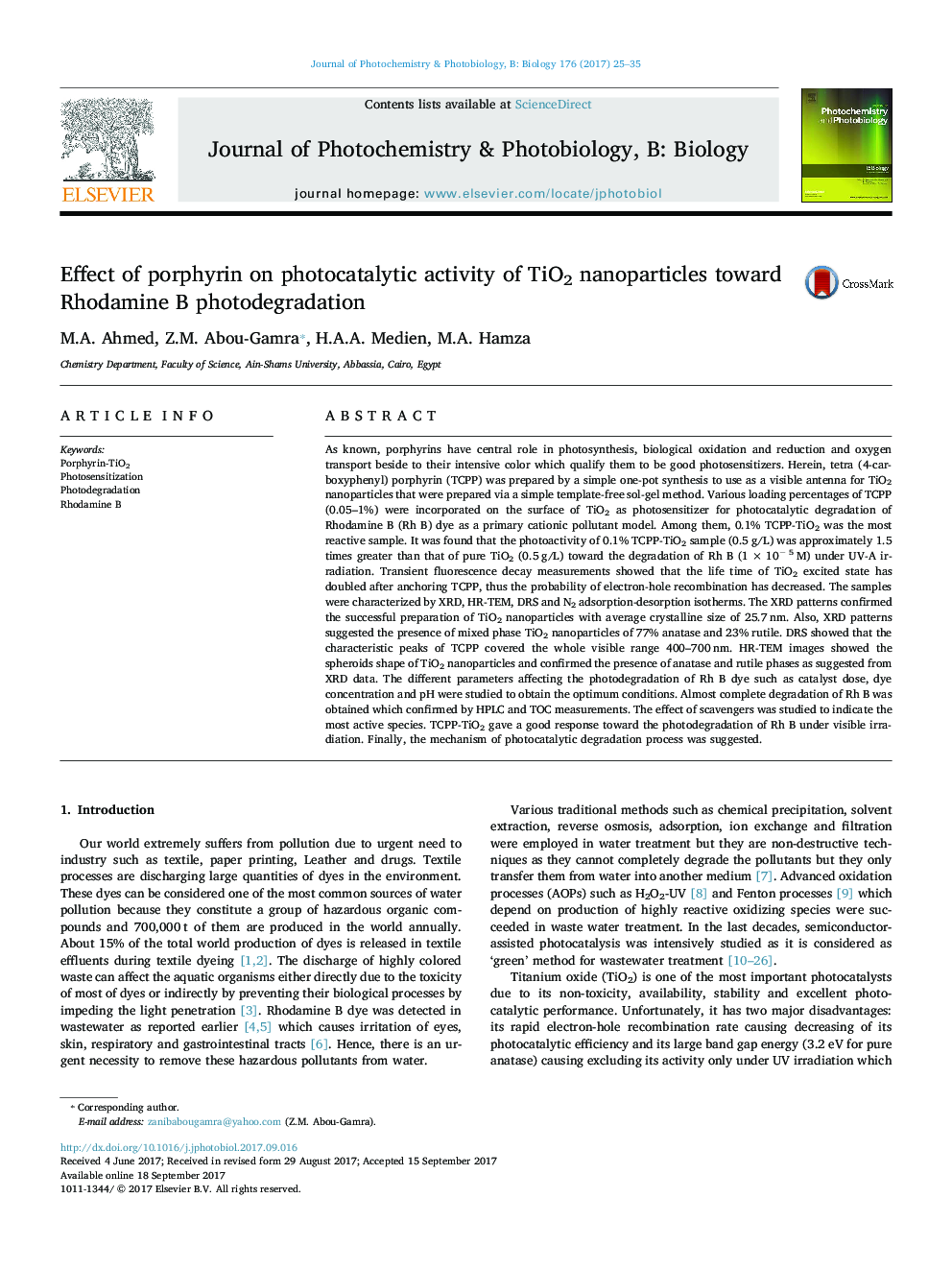| کد مقاله | کد نشریه | سال انتشار | مقاله انگلیسی | نسخه تمام متن |
|---|---|---|---|---|
| 4754292 | 1418057 | 2017 | 11 صفحه PDF | دانلود رایگان |

- x%TCPP-TiO2 NPs were synthesized using wet impregnation method and 0.1%TCPP-TiO2 was the most reactive sample.
- Photophysical properties and determination band gap energy
- Photocatalytic degradation of Rh B under UV and visible radiation
- HPLC and TOC results reflect complete degradation of Rh B.
- The mechanism is suggested according to the effect of scavengers.
As known, porphyrins have central role in photosynthesis, biological oxidation and reduction and oxygen transport beside to their intensive color which qualify them to be good photosensitizers. Herein, tetra (4-carboxyphenyl) porphyrin (TCPP) was prepared by a simple one-pot synthesis to use as a visible antenna for TiO2 nanoparticles that were prepared via a simple template-free sol-gel method. Various loading percentages of TCPP (0.05-1%) were incorporated on the surface of TiO2 as photosensitizer for photocatalytic degradation of Rhodamine B (Rh B) dye as a primary cationic pollutant model. Among them, 0.1% TCPP-TiO2 was the most reactive sample. It was found that the photoactivity of 0.1% TCPP-TiO2 sample (0.5 g/L) was approximately 1.5 times greater than that of pure TiO2 (0.5 g/L) toward the degradation of Rh B (1 Ã 10â 5 M) under UV-A irradiation. Transient fluorescence decay measurements showed that the life time of TiO2 excited state has doubled after anchoring TCPP, thus the probability of electron-hole recombination has decreased. The samples were characterized by XRD, HR-TEM, DRS and N2 adsorption-desorption isotherms. The XRD patterns confirmed the successful preparation of TiO2 nanoparticles with average crystalline size of 25.7 nm. Also, XRD patterns suggested the presence of mixed phase TiO2 nanoparticles of 77% anatase and 23% rutile. DRS showed that the characteristic peaks of TCPP covered the whole visible range 400-700 nm. HR-TEM images showed the spheroids shape of TiO2 nanoparticles and confirmed the presence of anatase and rutile phases as suggested from XRD data. The different parameters affecting the photodegradation of Rh B dye such as catalyst dose, dye concentration and pH were studied to obtain the optimum conditions. Almost complete degradation of Rh B was obtained which confirmed by HPLC and TOC measurements. The effect of scavengers was studied to indicate the most active species. TCPP-TiO2 gave a good response toward the photodegradation of Rh B under visible irradiation. Finally, the mechanism of photocatalytic degradation process was suggested.
Graphical Abstract64
Journal: Journal of Photochemistry and Photobiology B: Biology - Volume 176, November 2017, Pages 25-35